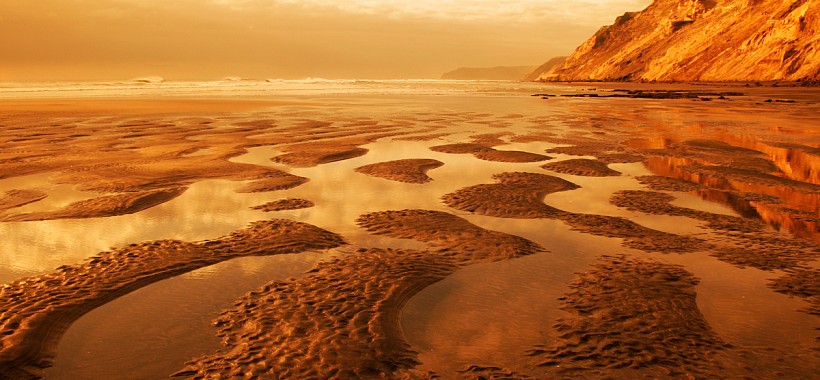Rich in History
It is commonly accepted that Awhitu means ‘Longing to Return’. There are many legends as to how Awhitu got this name, but the truth of the matter is lost in time.
Many Pa Sites
![George Flavell, Ngati Te Ata kaumatua, points out the treasured dune lake, Pokorua, and surrounding pa sites George Flavell, Ngati Te Ata kaumatua, points out the treasured dune lake, Pokorua, and surrounding pa sites]() The Awhitu Peninsula is a giant sand dune between the Manukau Harbour and the Tasman Sea. It is the traditional land of Ngati Te Ata, mana whenua of the area. In pre-European times many Maori lived here, caring for the land, using the rich food sources of the Manukau Harbour, the Tasman Sea, the streams, lakes and wetlands of the Peninsula, and the thickly forested land – puriri forest to the west and kauri to the east.
The Awhitu Peninsula is a giant sand dune between the Manukau Harbour and the Tasman Sea. It is the traditional land of Ngati Te Ata, mana whenua of the area. In pre-European times many Maori lived here, caring for the land, using the rich food sources of the Manukau Harbour, the Tasman Sea, the streams, lakes and wetlands of the Peninsula, and the thickly forested land – puriri forest to the west and kauri to the east.
Many historic pa sites are still clearly visible from the main road up the Awhitu Peninsula.
Early Europeans
![Tuis love the nectar from Phormium tenax flowers Tuis love the nectar from Phormium tenax flowers]() European settler history on the Peninsula dates from early 1836 with the arrival of missionaries at Orua Bay. At that time, the area was still 50% forested. There are many rich and varied stories told of early settlers on the Peninsula. Descendants of many of these original families still live in the area. For those interested in history, a fascinating and very detailed book on Awhitu entitled ‘Heads Harbour & Hills’ edited by Rachael Hawken and Lloyd Walker was published by the Awhitu History Book Society in 1999 (available for loan and in-library use from Waiuku and other Auckland Libraries).
European settler history on the Peninsula dates from early 1836 with the arrival of missionaries at Orua Bay. At that time, the area was still 50% forested. There are many rich and varied stories told of early settlers on the Peninsula. Descendants of many of these original families still live in the area. For those interested in history, a fascinating and very detailed book on Awhitu entitled ‘Heads Harbour & Hills’ edited by Rachael Hawken and Lloyd Walker was published by the Awhitu History Book Society in 1999 (available for loan and in-library use from Waiuku and other Auckland Libraries).
Over the decades, much Awhitu native forest was logged or burnt, until by the turn of the century only 7% of the Peninsula remained in bush, and pastoral farming became the predominant use. The valuable produce from these farms was supplied in ever increasing quantities to satisfy the needs of a growing Auckland. Unfortunately, as in many other areas of our country, the widespread land use change often resulted in the degradation of our waterways and harbour, draining of wetlands, and soil erosion.
Today, the Awhitu community is attempting to redress the environmental damage we humans caused in the past.



